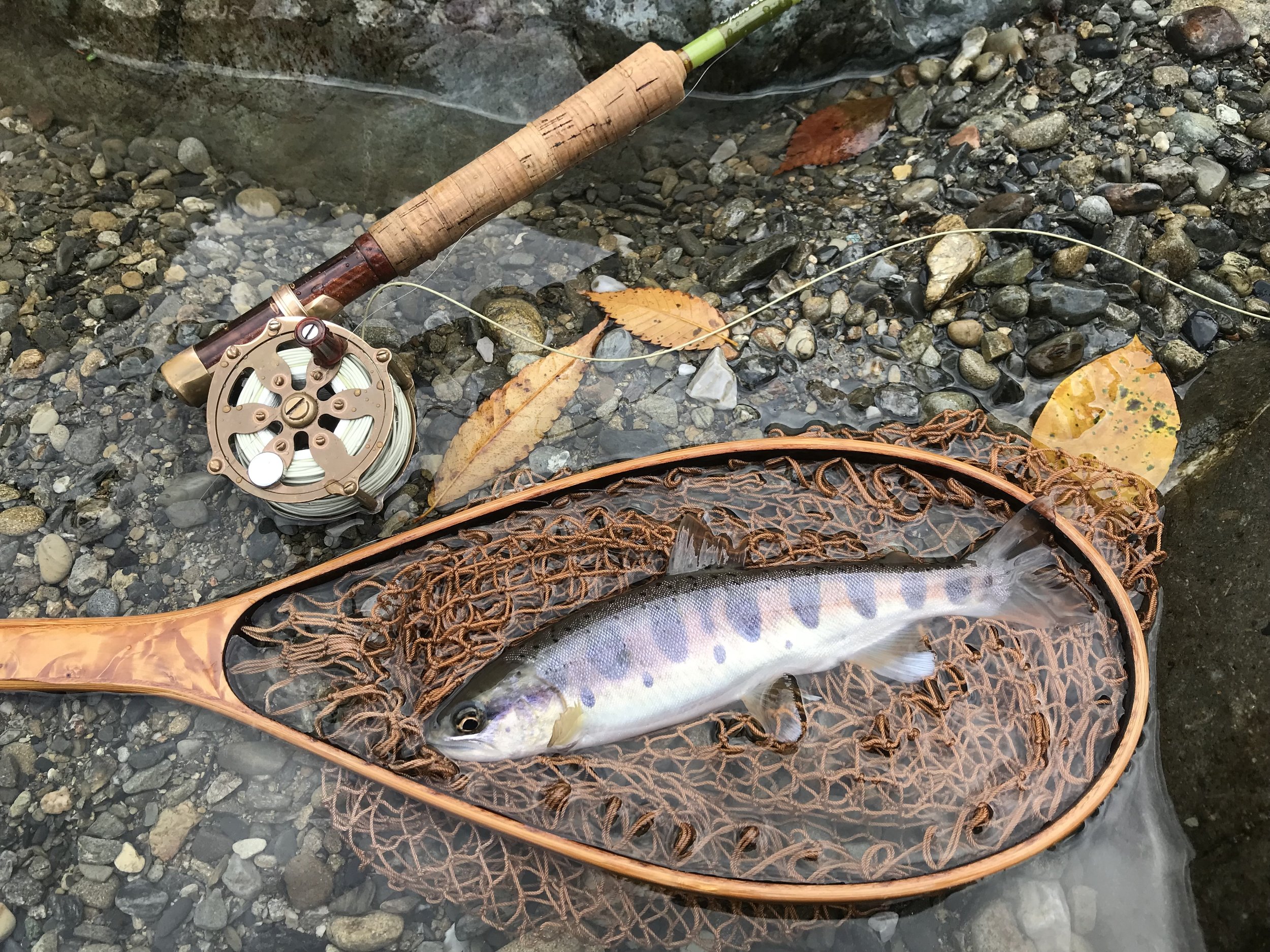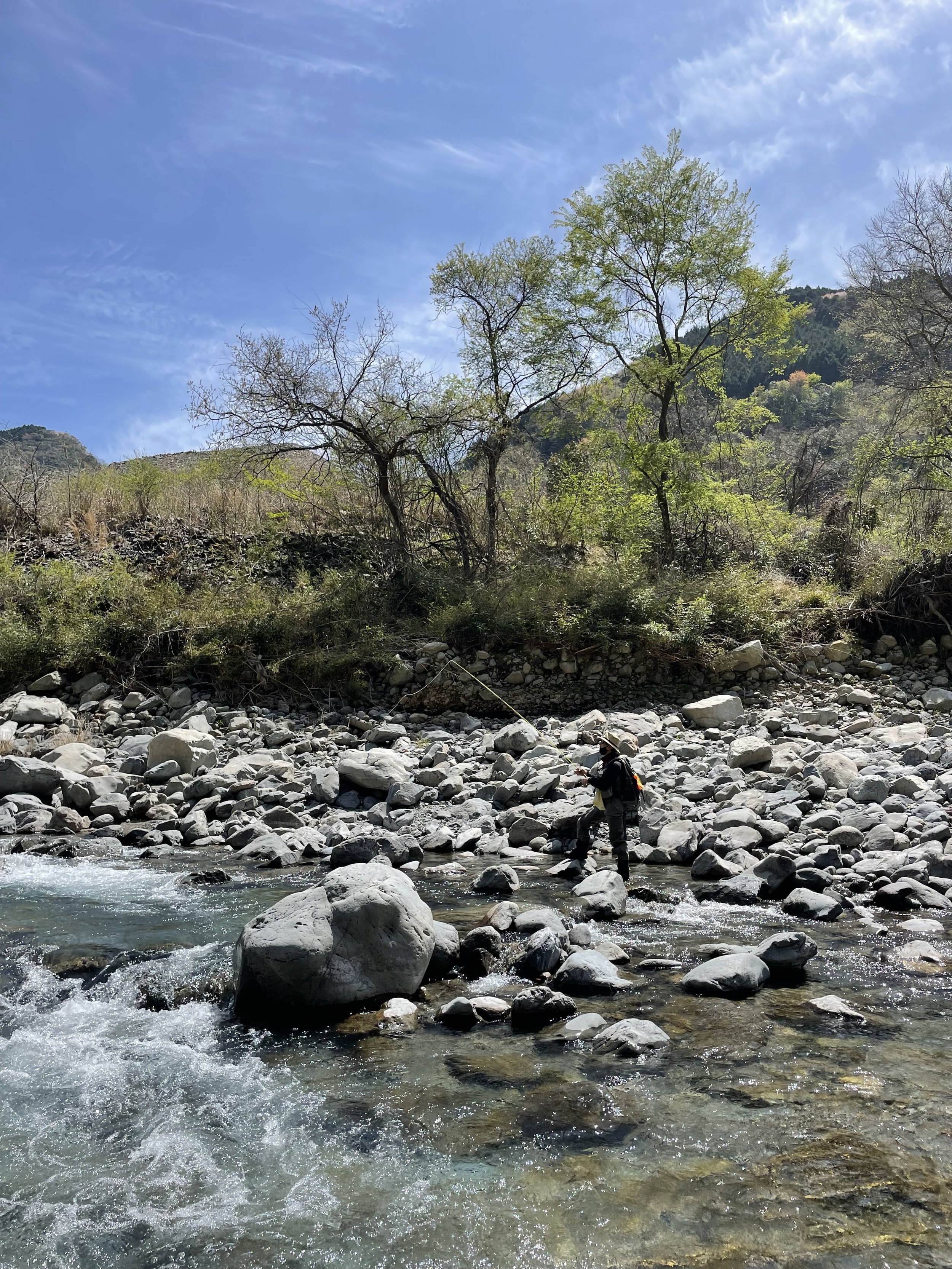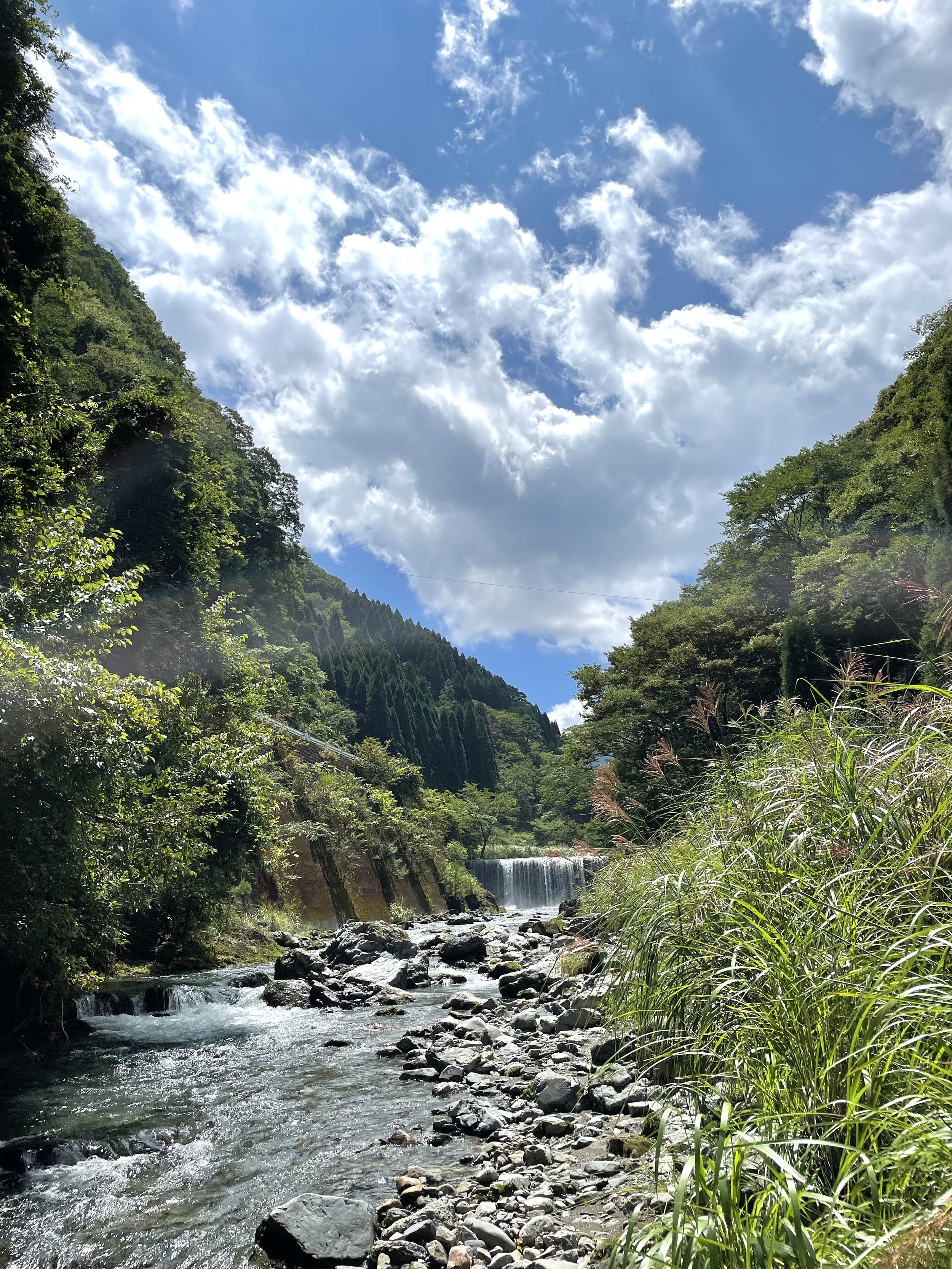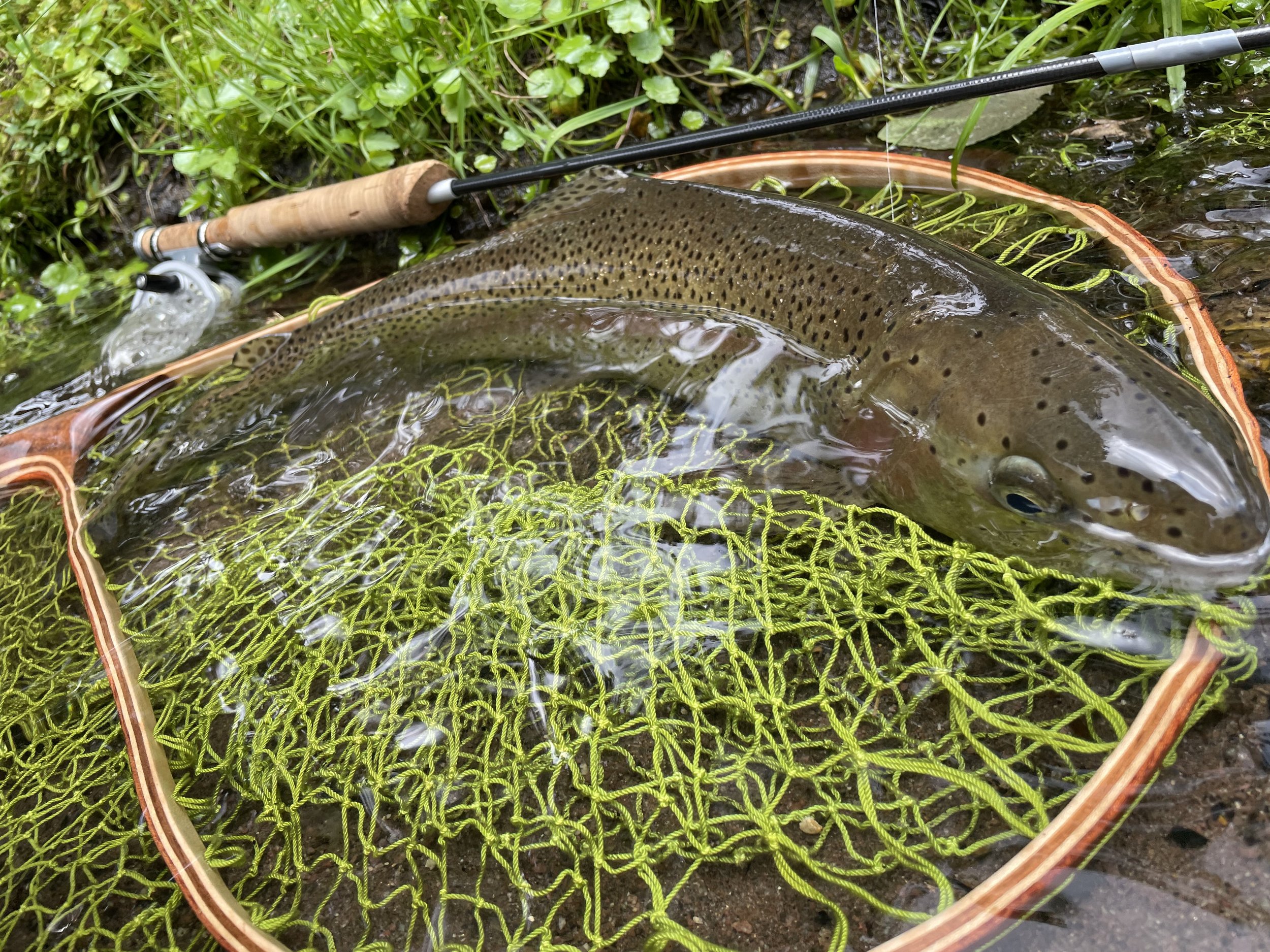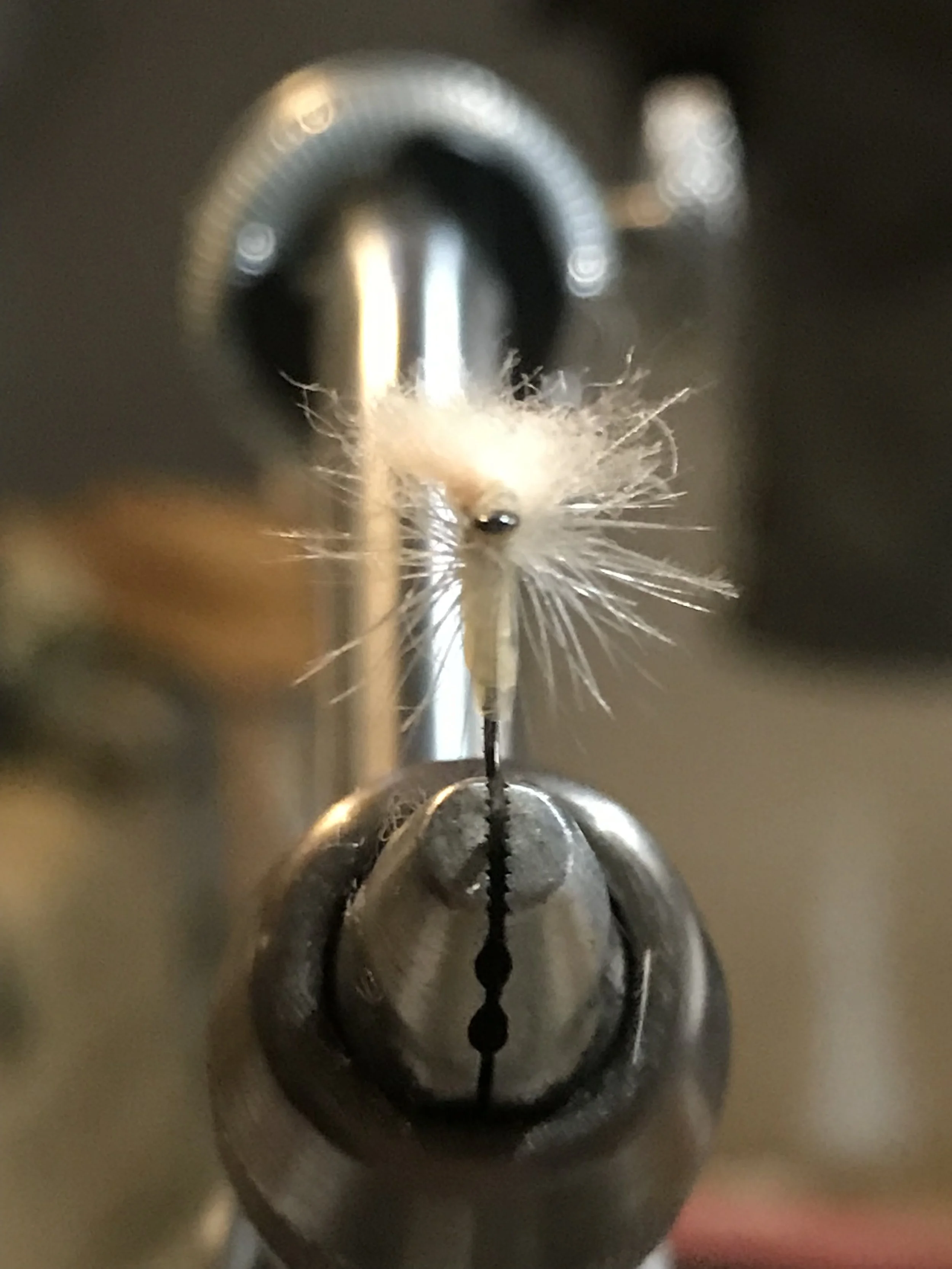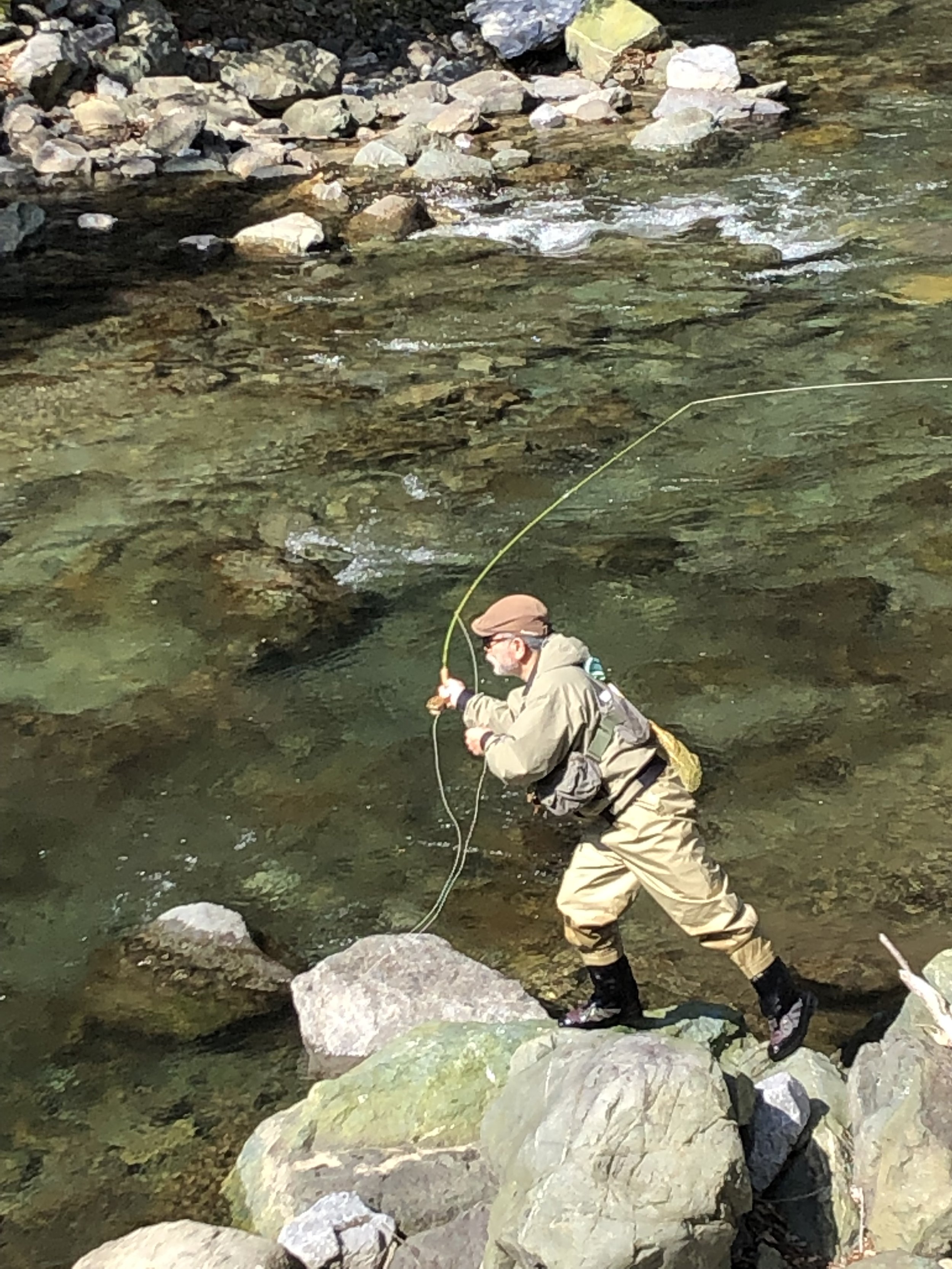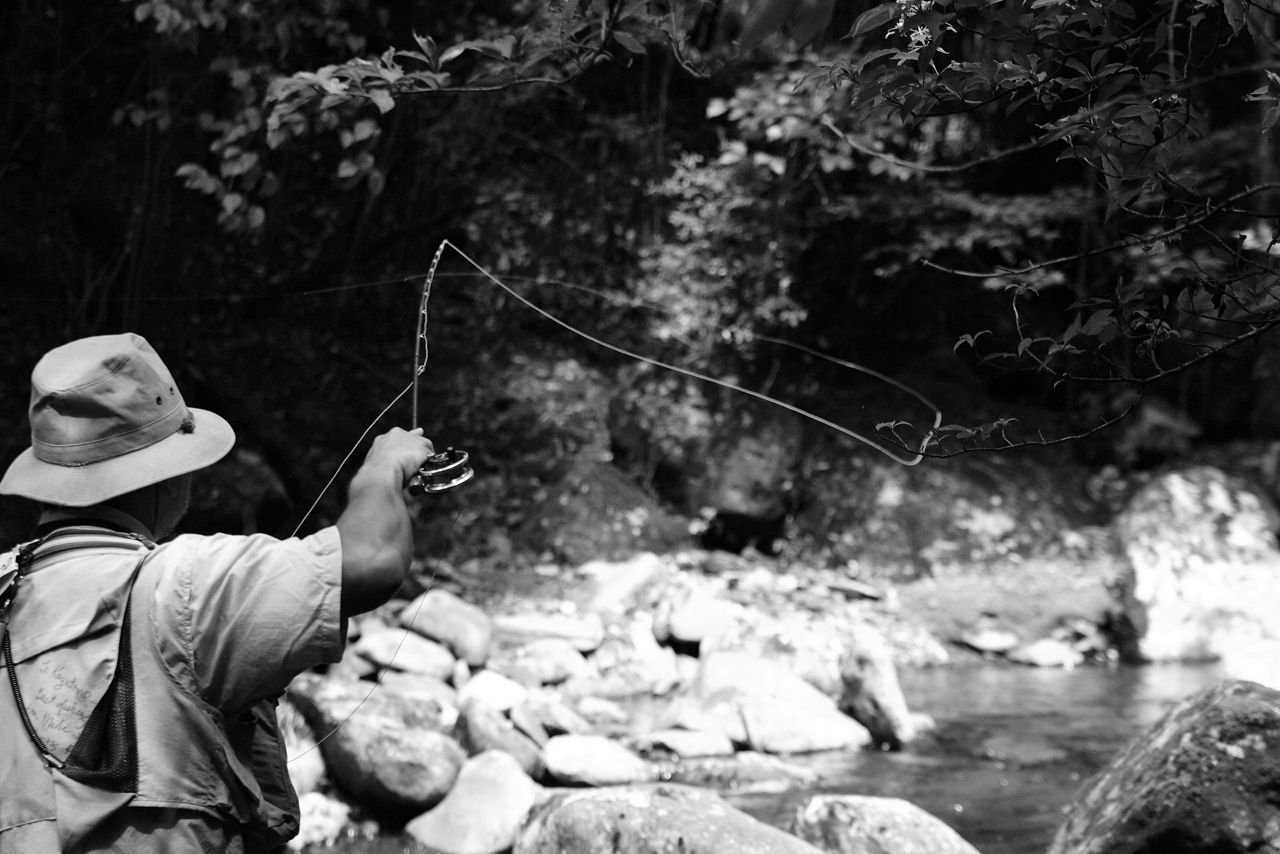
Tomo Kazutomo Ijuin
1. Choice of equipment Rods, reels, fly lines, fly floatants, clothes, glasses, and other useful items.
Depending on the target fish, river, and current, the rod and fly line combination will be chosen. As for the rod and reel, I recommend your favorite tackle that is not stressful. Most of my rods have a parabolic action, because I like that action. As for line, I only use DT lines. This is because DT line allows for soft, smoother presentation and easier control of loops. I am not particular about floatants or clothing. Protection from insects and sunlight is all that is needed. Polarized glasses are a must item. They protect not only your eyes, but also your life. I change the colour of my glasses depending on the amount of light. I also carry a wading staff to protect my life. I feel that fishing with my favourite gear makes fishing more enjoyable than anything else.
2. Leader material, build-up, length and knots.
I prefer nylon leaders. I usually use commercial leaders, but in special places with complicated currents, I sometimes make and use my own notched leaders with fluorocarbon. The length of the leader is 14ft. To this I use a system that adds about 3ft of tippet. This type of long leader is used when fishing for Japanese landlocked salmon. By dropping the leader and tippet in an L-shape, the L-shaped part is used as an anchor, making it suitable for fishing in fast currents in a drag-free manner. When I go to fishing overseas, a 9ft leader and 3ft tippet system is used.
3. Approach and stealth.
I do not like to approach fish close in. I like to approach the fish from as far away as possible, let the fly drift naturally, and let the fish bite naturally. I don't consider fly fishing to be fishing. Trying to successfully overcome difficult currents. Fishing with the best technique. I do this because I believe that by practicing this, I will improve my technique and catch fish. Developing your fishing technique is fun. For example, if you try fishing in a river with the rod tip pointing down as far as possible, you will see how difficult and new it is. If I can't reach the casting distance and must get close to the fish, I will approach from the side of the fish. This is something I learned from Rene Harrop, whom I met on the Henry's Fork about 20 years ago. I think he is certainly right about this.
4. Reading the water.
Reading the current is very important. Especially when fishing for landlocked salmon, the fish are often at the boundary between fast and slow currents. And that point depends on the time of year, time of day, and weather. In order to cast a fly to a point across several fast currents, it is necessary to understand the horizontal and vertical currents, both of which flow under the influence of stones and various structures. How does the line flow? How should the fly be dropped? What should the shape of the dropped line be? And where should the fish be? You need to be able to imagine where the fish are. In the case of landlocked salmon fishing, the game is decided in an instant. You have only one chance.
5. Casting ability which casts are essential.
Fishing requires the ability to drop the fly precisely on the targeted. You must even consider the shape of the line that lands on the water when you shoot. And the subsequent mending of the line will determine the success of the fishing. Dragging the fly more than necessary or allowing the line to pass through the area where the fish are located means that you will not catch fish. The game with fish may be determined almost entirely by casting and presentation ability. My rod for casting is a slow action rod that I can swing slowly and control with the butt section.
6. Entomology, what should we know.
What insects are active during which season? It is necessary to know what insects are active at what time of year. This can be done to some extent by observing the insects that are hatching while fishing on a regular basis. In many cases, fish that have become selective will not take if the fly does not imitate the insect. It is sometimes necessary to understand how insects on the water are moving and to entice them with movement.
7. Rise forms Can they tell us something?
How relaxed is the fish from the rising form? What kind of insects are they feeding on? You would be able to estimate. The rising form is a factor in deciding which fly to tie. If the fish are feeding on insects just below the surface of the water, you must tie a fly that looks like that. The rise of a spooky fish is fleeting, and the fly must be cast carefully.
8. Fly selection, Size, shape, materials, which flies are essential.
Flies are sized for the hatch and active insects. My dry flies are tied under the following conditions. (1) float well, (2) look good, and (3) glide well. Condition (3) may seem surprising, but when the conditions are right, the fish bite can be visible in the air. When you cast the fly slowly, the fish would watch the fly from under the water and jump out to catch the fly that sliding slowly toward the surface of the water. Sometimes the fish will catch the fly as it is. It is very exciting to watch that moment.
9. Presentation and drifts.
I try to keep my presentation as far away as possible. This way, the fish will bite the fly without caution. This style of fishing also helps me to improve my casting, mending, and thinking. Drifting can be done with no drag for 10 meters, depending on the situation. A big spooky fish will drift down 5 to 6 meters while watching the fly.
10. Upstream or downstream?
The direction of fishing is mostly up-cross or cross. Upstream casting is done only when the river is not wide enough to not get alert to the fish. You can actually catch fish from the front stream by cross casting because the line is less likely to flow over the fish's head. Depending on the location, if cross-casting is not possible, I may fish downstream, but the hooking will just be more relaxed and the timing will be more difficult. You will be able to catch the fish when you let the fly flow into the mouth of fish.
11. Fighting fish.
I want to be on somewhat equal footing with the fish. We want to have a serious head-to-head match with the fish, and if one of us makes a mistake, we lose. Fishing is a hobby for us to enjoy, but for the fish it is a serious fight for their lives. I use tackle that has the same level of power as the fish. When the match is over, I take care of the fish, let it recover with as little damage as possible, thank the fish, and hope to see it again. Fishing in my area is mainly for landlocked salmon. The size will be around 30 cm at the largest. Fishing for landlocked salmon may be more difficult than for other fish. They are very wary and it depends on your skill and luck on how not to miss the few chances you have. It is interesting precisely because it is difficult. Please give it a try.
